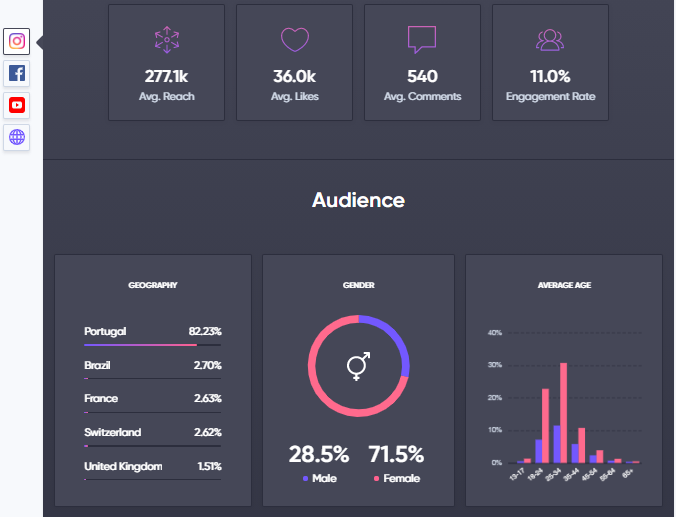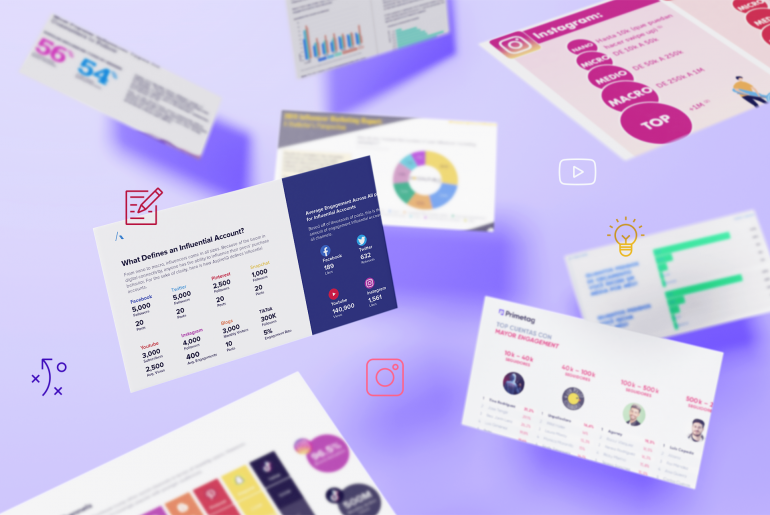Influecer Marketing Metrics – Think about it – you use campaign goals on Ads, so why shouldn’t you be using that in Influencer Marketing?
This article covers Influencer Marketing Metrics, Goals and Objectives:
- Influencer Marketing goals and campaign metrics objectives
- How to use goals in Influencer Marketing campaigns
- The Influencer Marketing campaign objectives brands are using right now
- Find the right IM campaign objective for your brand’s marketing strategy
Goals and campaign objectives
You can read more about goals here
Defining goals for your IM campaigns helps focusing on you what you want to achieve.
From strategy to results, an accurate goal selection helps with:
✓ Writing the briefing
✓ Selecting influencers and Social Media (SM) channels
✓ Influencer compensation
✓ Campaign performance tracking
How to use goals in campaigns
Imagine you are a Brand Manager on a beverage and food category and you are about to launch a new product to the market. The most logical step would be to step up your Branding efforts by reaching a greater number of people and raising awareness for your amazing new product.
On Primetag you can choose to build a Reach campaign in order to deliver your message to the maximum amount of people or an Awareness campaign to get the maximum amount of views.
| 🗒️ | Note Primetag platform allows you to choose only one objective per campaign, nevertheless you can implement several campaigns at a time and find what works best for your business. |
| Goal | Campaign | Key metric | KPI | KPI description |
| Branding | Reach | Reach | CPM | The cost per reaching 1000 users |
| Branding | Awareness | Impressions | CPM | The cost per getting 1000 views |
Now that you’ve decided to run one or more campaigns to launch the new beverage you have a clear path when making decisions.
| 1. | Briefing It will help you to write a better briefing so influencers can best understand what you wish to accomplish with your campaign and manage their expectations accordingly. |
| 2. | Influencer benchmarking Benchmark influencers according to their average performance, regarding audience reach and the number of impressions for example, so you can pick the right ones for your campaign. You can also choose the influencers SM channels that you expect will perform the best. |
| 3. | Influencer compensation You can make a conscious decision, depending on the type of influencer and collaboration, whether you wish to pay a sponsored post right from the start or tie the influencer’s compensation with the contents performance using the campaign’s KPI. |
| 4. | Performance measurement Measure the campaign’s performance according to one main KPI, so you can keep track of it and share relevant data with your team. |
| 5. | Campaign optimization Make adjustments while the campaign is still ongoing in order to improve your ROI – Return On Influence. |
The Influencer Marketing metrics and campaign objectives brands are using right now
Breaking down the numbers
Awareness and Reach are used because they are simpler to communicate, build and operate. When working with the right influencers it can be quite easy to reach a vast audience using Instagram stories and posts. This type of campaigns generates results right from the start.
Traffic campaigns drive people to an e-commerce website or landing page and are also pretty straightforward to operate. Besides Instagram stories, Facebook and Blogs are also used to drive traffic to the clients’ web properties.
Conversion and Sales campaigns can be measured with coupons.
Besides all the steps we’ve discussed previously, like producing a briefing and choosing the right influencers, clients need to have an integrated strategy. This may involve not only the sales team but also the IT department because there’s a need to install a tracking pixel to accurately measure conversions and sales on the e-commerce website.
It’s also more complex to come with an agreement with influencers so they can be prepared to pitch and sell products – they may feel comfortable with recommending a product but not with selling it.
Find the right IM campaign for your brand’s marketing strategy
Choosing the right IM campaign is a fine balance between your brand’s goals and what the influencer is capable or willing to provide.
In traditional advertising, TV, radio, press and in digital advertising like FB ads and Adwords, the channels may seem agnostic – meaning that the consumer has no preferential method for receiving advertising.
With IM things don’t work exactly that way. Every influencer owns a communication channel, produces content and is in control of the relationship with its audience. Plus he or she is a real person with a specific character, taste and set of beliefs.
Choosing the right IM campaign is a fine balance between your brand/company’s goals and what the influencer is capable or willing to provide. Here’s a simple example:

Influencer A
Has great communication skills and can reach a big audience. She may be the right person to introduce your new product to the market thus generating awareness.

Influencer B
Loves knowing every detail of a product and can explain a very complex feature in a simple and easy way. Therefore he may be the right person for conversion and sales.
Influence Marketing Metrics when Evaluating Influencers for Campaings
Average Post Reach and Engagement Rate
Posts are seen on average by 12 to 25% of the follower base. So how can you calculate by post reach?
Total engagements per post/average reach per post * 100
Well, you can’t by get Influencers Posts Reach on your own. You will need Primetag Software to help you get the metrics by connecting your Influencers with the Platform.

Profiles Audience Overlap
Awareness or Conversions! Select the best Combination to your Objectives.
For your message to be widely spread select the best combination of Influencers (2 or more) with the lowest number of shared followers.
For your message to work as “Influencer Remarketing” and impact the same audience with the Best Combination of 2 or more Influencers.
Influencer Marketing Metrics: Choose the Right Goal for Your Campaigns
If you’re a data driven marketer and all this seems very ethereal you can also use this framework to help you make better decisions in your Influencer Marketing strategies.
| Goal | Branding | Interaction | Conversion | |||
Campaign Type | Reach | Awareness | Traffic | Engagement | Conversion | Sales |
Campaign Description | Deliver your message to the maximum amount of people | Get the maximum amount of impressions | Drive people to an e-commerce website or landing page | Induce people to interact with content, such as liking, commenting and sharing | Accomplish specific actions like a download or newsletter subscription | Generate sales on a e-commerce website |
Key metric | Reach | Impressions | Clicks | Engagement rate | Conversions | Sales & Revenue |
KPI | CPM | CPM | CPC | CPI | CPA | CPS & ROI |
KPI description | The cost per reaching 1000 users | The cost per | Cost Per Click | Cost Per | Cost Per | Cost Per Sale |
Final thoughts
The lack of an Influencer Marketing Strategies playbook is a legitimate reason why many brands and marketers are not considering it yet as part of the marketing mix. I admit that’s hard to calibrate expectations regarding IM. Furthermore, when working with several Influencers simultaneously it’s also hard to have a clear view of the campaign’s stage, published content or achieved results.
Discover how this Coffee Brand, one of the world’s largest food and beverage companies, used Primetag platform to plan, develop and implement an Influencer Marketing campaign. Managing the launch of a new product with our software allowed a 280% increase in ROI. Read the step-by-step guide on IM optimization:
Executing a killer influencer marketing campaign: step-by-step guide




